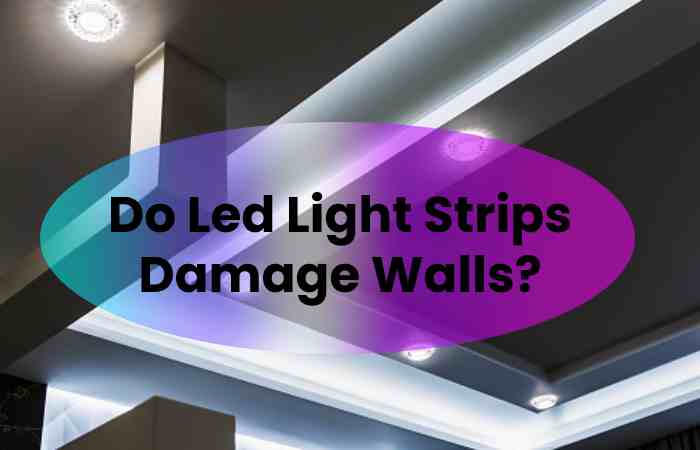Led Wall Light – What Are Led Wall Sconces?
LED-wall lights have a much longer life than your usual CFL and halogen lights. It is because LED-wall lights do not heat up, making their life much longer than average bulbs, as the heat wears out other types of lights.
LED lighting differs from glowing and fluorescent in several ways. LED lighting is extra efficient, versatile, and lasts longer when designed well. In addition, LEDs are “directional” light sources, which means they emit light in a specific direction, unlike incandescent and CFL, which emit light and heat in all directions.
Table of Contents
What Are Led Wall Sconces?
A sconce, by definition, is classically a wall lighting fixture that remains installed using the wall for support. Such lights are frequently directed upwards and owe their existence to the pre-modern age when institutes like these remained used to grip candles and torches. Modern wall sconces come in various forms and sizes and generally require some electric light source that connects within the fixture.
What Are The Different Types Of Led Wall Sconces?
Contemporary wall lights originate in various shapes, sizes and make. Here is a quick round-up of the utmost popular and common types of wall sconces:
- Flush mount wall light
- Semi-flush mount wall light
- Spotlight sconce
- Armed sconce
- Recessed light sconce
- Lantern-type wall sconce
- Half-moon sconce
- Floodlight sconce
- Wallchieres
- Candle sconce
- Picture light
The materials that wall sconces and lamps remain typically made from include:
- Metal
- Glass
- Ceramic
- Crystal
- Plastic
Do Led Light Strips Damage Walls?
Living in rented accommodation can be challenging to put your mark on a place without permanent injury to fixtures and fittings. Modern leasehold law authorizes landlords to deduct money from tenants’ deposits if they create holes, cracks, or chips. But, of course, nobody needs to lose money, so renters often feel restricted about the customizations they can tool in their homes.
LED strip lights seem to offer a viable solution to this problem. They’re powerful enough to alter a room, making it feel homelier. In addition, their adhesive, semi-permanent nature means they can easily remain removed when it’s time to move out.
Are LED Strip Lights Too Good To Be True?
LED strip lights are unlikely to damage walls, depending on various factors. For example, the strength of their adhesive, the durability of paint or wallpaper, how long they’ve remained applied, and the climate can also impact how well LED strips bond to a surface. So if you’re considering purchasing LED strip lights but are worried about damaging your walls, listen!
History of LED development
The history of LED starts from the beginning of the twentieth century. In 1907, English explorer Henry Round proposed the technology on which LED remained based. He found a glow around the working detector contact.
In the British Marconi Lab, the luminescence in silicon carbide remained recorded for the first time in world history. Later in 1923, the Russian scientist Oleg Vladimirovich Losev found the connection for this phenomenon.
In the Nizhny Novgorod laboratory, he observed the glow of silicon carbide crystals while studying the phenomenon of radiative recombination. Losev was the first to prove semiconductor electroluminescence, i.e. the emission of light when an electric current flows. It was the first step toward creating LEDs, but this discovery had no practical application for a few decades.
Development
Industrial development of semiconductor lamps began only in 1951. A centre for developing “semiconductor lamps” was established in the United States. They were operating based on the “Losev effect”. Physicist and inventor Kurt Legovets headed the centre. Led Wall Light
In 1955 – Rubin Braunstein from the Radio Corporation of America told about the presence of the infrared radiation of gallium arsenide (GaAs) in combination with other semiconductor alloys. Braunstein observed infrared emission generated by a simple diode structure based on gallium antimonide (GaSb). Gallium arsenide, indium phosphide (InP), and silicon – germanium alloy (SiGe) at room temperature.
How And Where To Use Wall Sconces?
While you can let your imagination and originality take over when figuring out where you want to install wall lights, the agreement and design thinking dictate that certain types of wall sconces remain used for specific purposes. For example, a picture light remains typically used for highlighting a portrait, painting or piece of art hanging on the wall.
Similarly, sconces that provide uplighting stands remain generally preferred as the primary or secondary illumination source in driveways, porches, stairways, entryways, hallways, strips or large dining/living rooms. You will also find some wall sconces specifically designed to cater to the needs of a particular room. The wiring lamp, for instance, is apt for ultramodern living rooms or swanky office cabins.
What are LED Video Walls?
LED video walls remain comprised of Direct View LED displays (also named DV) that work together as a unit to display gratified as if it were a single screen. LED screens are efficient because each component is accountable for conducting and emitting light.
Light-Emitting Diodes
LED stands for “light-emitting diode, ” a tiny, two-lead semiconductor light source. LEDs are unique because, unlike any extra technology for digital signage. They can produce and then emit light on their own. In addition, it makes them long-lasting and highly durable.
Light-emitting diodes are tiny light bulbs that can plug hooked on an electric circuit. Unlike standard light bulbs, though, they do not have a filament. Therefore, they do not burn out or run hot. Instead, they are illuminated only by the movement of electrons in a semiconductor material. It is also what determines the colour of the bulb. Also, unlike other video walls where the images are backlit, LEDs produce them.
DV LED displays began as monochrome and remained often used in outdoor digital signage solutions. However, everything changed when RGB (colour) LEDs hit the market in the late 90s, and direct view light-emitting diode screens are now a significant trend in the digital signage industry.
Pixel Construction
As the marketplace for LEDs continues to evolve, pixel density remains greatly improved. As a result, the gap that once set LED and LCD so far apart is now swiftly closing. In addition, LEDs in video walls are unique because the displays can achieve “true black.” It remains done by coating each LED with black resin epoxy. Then, shades are inserted between the lights to separate the illuminations and eliminate reflectance. Led Wall Light
Conclusion
LED (Light Emitting Diodes) remain the latest and most exciting technological advancement in the lighting industry. LEDs are small, hard light bulbs which are extremely energy efficient and long-lasting. In addition, LEDs operate differently than traditional incandescent light bulbs. Led Wall Light
Also read : Types of AI and what are they?
Related posts
Featured Posts
Brooks Launch 8 Women
Brooks Launch 8 Women: The Brooks Launch 8 is an impartial lightweight cushioned trainer. The Launch 8 can be a quick…
What is Marketing Icon
Marketing Icon: A marketing Icon is everything in the marketing world. If you want to capture marketing budgets, marketing with…

